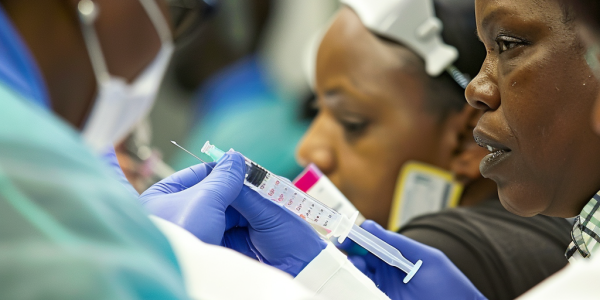Managing Asthma Attacks: Insights from UC Davis Health Pulmonologist
Learn how UC Davis Health’s pulmonologist, Samuel Louie, is providing valuable insights on managing asthma attacks. Recognizing symptoms like coughing, wheezing, and shortness of breath is crucial for effective asthma management.
KKR in Talks to Acquire Minority Stake in Infinx Healthcare for $150 Million
KKR is in talks to acquire a minority stake in Infinx Healthcare, a healthcare BPO company, for $150 million. The investment aims to leverage Infinx’s tech-enabled solutions to tap into the growing healthcare BPO sector in India. With a workforce of over 4,000 employees, Infinx offers RCM solutions to various healthcare entities and plans to expand its healthcare platform through organic growth and strategic acquisitions.
ScribeAmerica’s AI Scribe Application, Speke, Sees Significant Growth in Patient Encounters
ScribeAmerica’s AI scribe application, Speke, has seen a significant increase in patient encounters over the past year. With a focus on integrating artificial intelligence seamlessly into provider workflows, Speke offers accurate, timely documentation without compromising quality. As one of the most widely adopted AI scribe applications, Speke provides real-time AI tailored to provider preferences, quality assurance, and support from trained specialists. With ongoing development to meet the evolving needs of healthcare providers, Speke by ScribeAmerica aims to alleviate administrative burdens and enhance the overall healthcare experience.
Uber Health Unveils New Caregiving Solution, Uber Caregiver
Uber Health introduces Uber Caregiver, a new solution to simplify benefits and logistics for families. Caregivers can access health benefits, arrange rides, and order groceries through the Uber app. The service aims to alleviate emotional stress associated with caregiving tasks and empower individuals to take care of themselves with assistance.
England Rolls Out Injectable HIV Antiretroviral Therapy, Faces Challenges
England has initiated the provision of injectable HIV antiretroviral therapy to patients, showing overall effectiveness and positive feedback. However, concerns have been raised due to reported cases of virological failure with drug resistance. Researchers are investigating to enhance the reliability of injectable HIV therapy.
Cyberattack Disrupts Operations at Major US Health Care Network Ascension
A recent cyberattack has disrupted operations at a major US health care network, Ascension, leading to concerns about patient care. The health care nonprofit is taking steps to minimize the impact of the attack on its clinical operations. Ascension has assured that patient care delivery will continue to be safe and minimally impacted, despite the disruption. As cyber threats continue to evolve, organizations like Ascension are under increasing pressure to safeguard their systems and protect sensitive patient information from malicious actors.
Dunkin’ Offers Free Coffee to Nurses During National Nurses Week
Celebrate National Nurses Week with Dunkin’! Nurses can enjoy a free medium hot or iced coffee on May 6 as a token of appreciation for their hard work. Learn more about this special offer and how businesses are recognizing nurses during this important week.
Celebrating National Nurses Week in Texas
Celebrate National Nurses Week in Texas from May 6 to May 12 with special deals and discounts for healthcare workers. With over 232,000 registered nurses in the state, nurses can enjoy offers like 20% off at Buffalo Wild Wings, discounts on e-bikes and scrubs, free coffee at Dunkin’, and more. These tokens of appreciation highlight the dedication and hard work of nurses in the healthcare industry.
Americans Increasingly Conscious of Hand Hygiene Due to Covid-19
Discover how the Covid-19 pandemic has led to a significant increase in Americans’ awareness of hand hygiene. With 80% of people more conscious of germs in restrooms, the impact of the pandemic on handwashing behavior is evident. Learn about the shift in handwashing frequency since 2009 and why 95% of adults now consider handwashing essential for maintaining overall health.
Study Reveals Alarming Rates of Preventable Deaths in Rural Ohio
A recent CDC study reveals alarming rates of preventable deaths among rural Ohioans, with heart disease, cancer, unintentional injury, stroke, and chronic lower respiratory disease as top causes. Lack of healthcare access and reluctance to seek medical attention contribute to higher mortality rates. Early detection and treatment are crucial. Data shows over half of chronic lower respiratory disease deaths and two-thirds of unintentional injury deaths in rural Ohio could have been prevented. Dr. Andryc calls for increased funding, health education, and incentives for regular check-ups to address these concerning trends and reduce preventable deaths.










